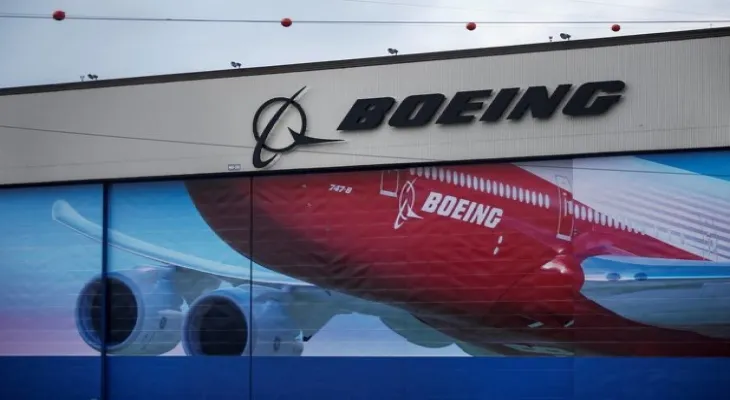Search here
Newspaper
Search here

Arab Canada News
News

Published: January 7, 2024
The Federal Aviation Administration (FAA) ordered on Saturday that 171 Boeing 737 Max 9 aircraft undergo immediate inspections and banned them from flying until those inspections are completed, following an incident on Friday shortly after a flight of Alaska Airlines took off from Portland International Airport heading to Ontario, California.
The agency stated in a statement that the process would take between 4 and 8 hours per aircraft and will involve inspecting the planes before they undertake any new flights, according to Reuters.
So far, about 218 units of this model have been delivered to airlines, according to data obtained by the Agence France-Presse from Boeing.
FAA Administrator Mike Whitaker said: "The Federal Aviation Administration is requiring immediate inspections on certain Boeing 737 Max 9 aircraft before they are allowed to fly again. Safety will continue to guide our decisions as we work with the National Transportation Safety Board in its investigation of Alaska Airlines flight 1282."
This move represents a setback for Boeing, which has suffered from manufacturing defects in its 737 aircraft. It still faces the repercussions of a global 20-month ban imposed by regulators following two deadly crashes five months apart, according to the Financial Times.
Boeing said in a statement: "Safety is our highest priority. We agree with and fully support the FAA’s decision to require immediate inspections of Boeing 737 Max 9 aircraft that have the same configuration as the affected aircraft."
Before this decision, the US airline Alaska Airlines announced the suspension of its entire fleet of this model, stating in a statement that among its 65 Boeing 737 Max 9 aircraft, the flight crews had inspected exits covered with panels as part of recent maintenance on 18 aircraft, which were allowed to return to service on Saturday. It indicated that inspections on the remaining aircraft are expected to be completed in the coming days.
The specialized site FlightAware pointed out that the aircraft, which was carrying 171 passengers and 6 crew members, was at an altitude of 5,000 meters. The pilots were forced to perform an emergency landing, with passengers and the six crew members wearing oxygen masks. No one was seriously injured when the low-pressure plane safely returned to Portland International Airport about 20 minutes after departure.
Photos showed that part of the aircraft's fuselage, which is sometimes used as an optional exit door, was torn. Low-cost airlines that transport more passengers often install the additional door to provide more evacuation options. The doors are permanently deactivated on Alaska Airlines aircraft.
National Transportation Safety Board Chair Jennifer Homendy said authorities are still searching for the door from the closed exit and have a good idea of where it fell, near Oregon Route 217 and Barnes Road in the Cedar Hills area west of Portland.
She indicated that fortunately, the aircraft had not yet reached cruising altitude, as passengers and flight attendants were moving around the cabin.
For his part, Alaska Airlines CEO Ben Minicucci said: "The inspection of the company’s 737-9 aircraft may take days to complete." These aircraft represent 5 out of the company’s 314 planes.
He continued: "We are working with Boeing and regulatory authorities to understand what happened… and will share updates as more information becomes available."
Alaska canceled more than 100 flights, or 15% of its schedule on Saturday, by noon, according to FlightAware.
The UK Civil Aviation Authority said that since there are no 737 Max 9 aircraft registered in the UK, the impact on UK-operated aircraft and consumers is very minimal.
It noted that it has written to all foreign and non-UK airlines requesting confirmation that inspections are carried out prior to any operation in UK airspace.
Comments